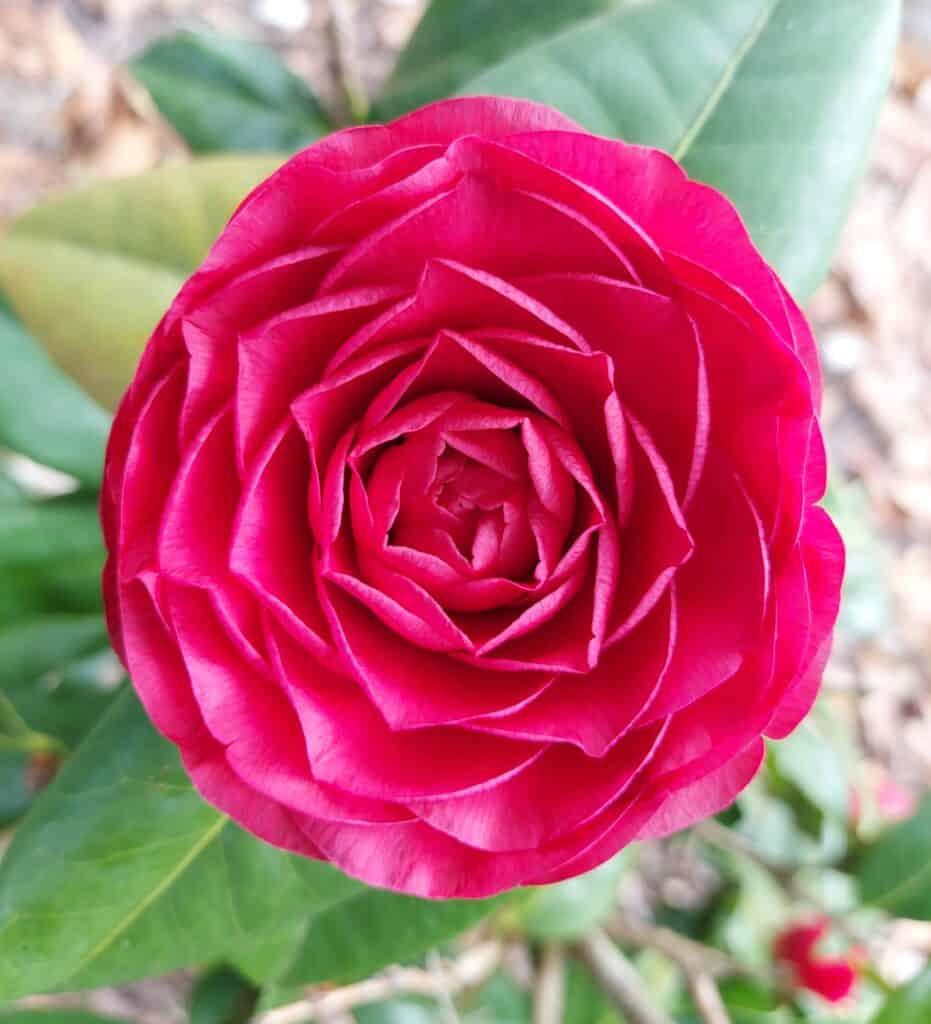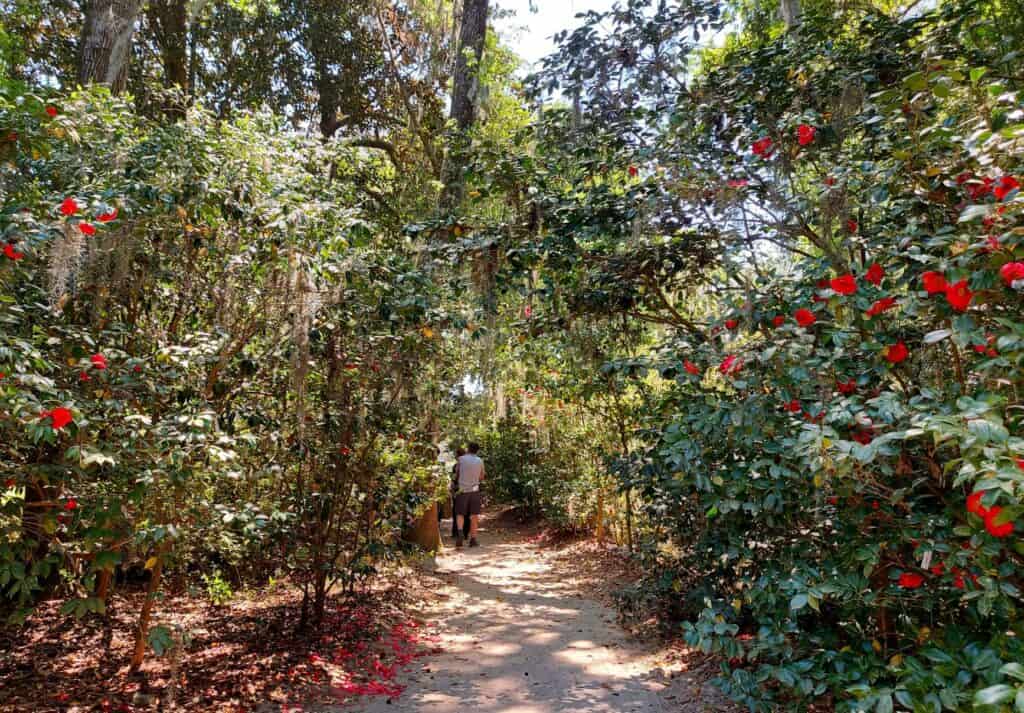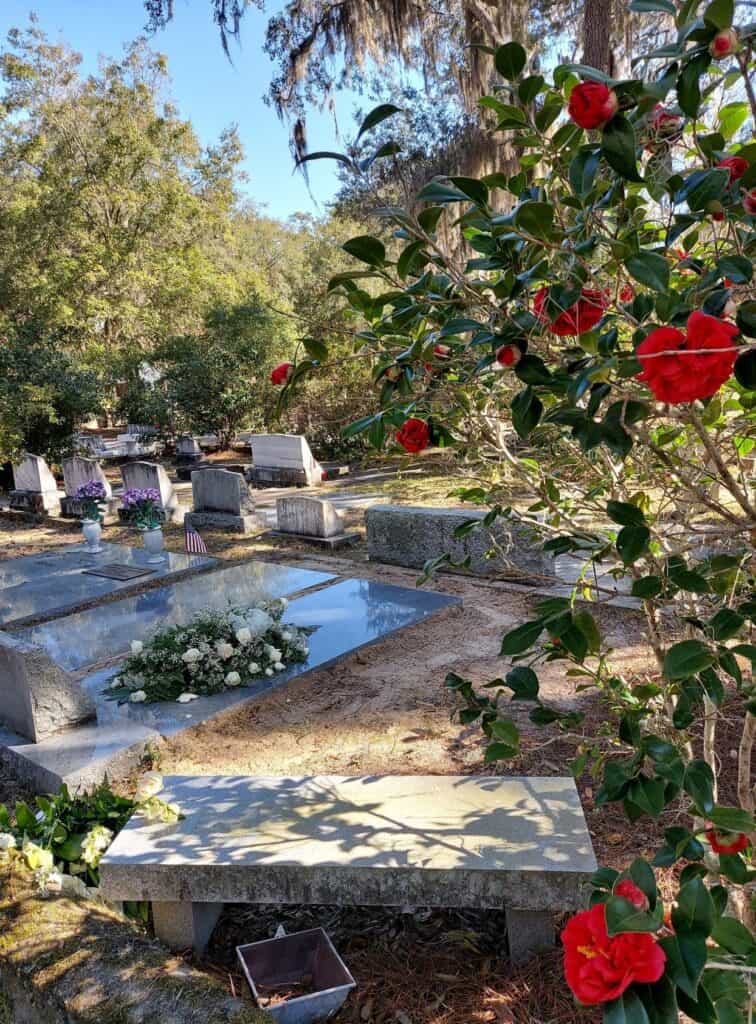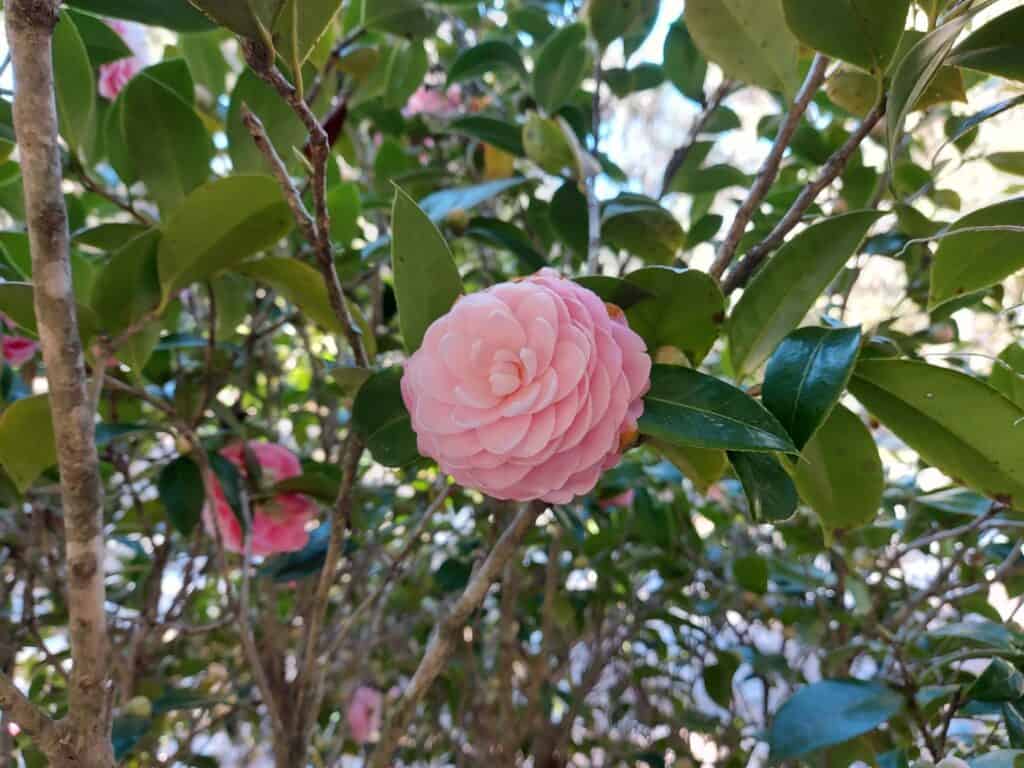Camellia: Queen of Winter Blooms
Winter is my favorite bloom season. You may think this strange, but stroll a Southern town such as St. Marys and tell me its camellias adorned with deep red, pastel pink, and snow-white flowers are not a winter marvel. Below we discuss this floriferous shrub, its journey across the globe, and its adopting the Southern United States as home. We also include tips on where to purchase your own local camellias!

Even if it does look at home here, the Camellia japonica is not native to the United States but to eastern and southern Asia. The Japanese call the camellia Tsubaki, or “tree with shining leaves,” and have grown these plants for over 3,000 years; today some camellias at the Imperial Palace are known to be more than 500 years old. Those adhering to the Shinto religion believed that the gods when visiting earth made Tsubaki flowers their home, making these bushes an essential feature of temple gardens, graveyards, and other areas of the community’s religious life.
The world’s most popular camellia often is not even recognized as a member of this family: the Camellia sinensis, or tea plant. First arriving in London through trade with the East in 1650, it quickly became universally popular. The Camellia japonica arrived in London sometime before 1739, possibly by accident, as the Chinese likely meant to send a tea plant instead.
Camellias made their way to the United States through South Carolina in the eighteenth century when André Michaux, royal botanist to King Louis XVI of France, established an experimental botanical garden outside Charleston in 1786. That year he is said to have presented camellia plants to his neighbors, the Middleton family, for their plantation gardens. Now Middleton Place boasts 4,000 camellias, including one of Michaux’s originals, the “Reine des Fleurs,” or “Queen of Flowers.”

Camellias, which bloom in the fall and winter, come in a staggering number of varieties – more than 20,000 – with a remarkable range of colors, forms, and sizes. Camellia japonica, the most ubiquitous, can vary from small shrubs to trees up to 30 feet tall with red, pink, or white blooms from November to March. A less common variety, the Camellia sasanqua, produces small trees up to sixteen feet tall with white flowers from September through December. If you wish to plant camellias in your yard, keep in mind that selecting a few different varieties could extend the color in your landscape from weeks to months.

Knowing the camellia’s history, it is fitting that iconic Oak Grove Cemetery in St. Marys is dotted with this shrub just as traditional Japanese cemeteries are. Several of these camellias arrived from their original American landing-place of Charleston, since many St. Marians had connections with that region through trade and family ties. We even know the specific origin of some the cemetery’s varieties, such as Reverend John Bennett and John Drayton, which came from Charleston’s Magnolia Plantation in the late 1800s.
One local resident is keeping our cemetery’s camellias “alive” in more ways than one. Kay Westberry, volunteer at Oak Grove Cemetery, not only regularly cares for camellias at the cemetery but also takes cuttings from its healthiest and best-blooming bushes to propagate new plants. Of the dozens of cuttings she takes yearly, about one-third take root and grow. These she raises and, when they are large enough, sells them at prices much lower than those at garden stores. All proceeds go towards buying fertilizer, pine straw, and sprays for Oak Grove’s camellias.
Therefore, if you wish to possess your own rare and historic variety of camellia, you are in luck! Follow “Friends of Oak Grove Cemetery” on Facebook to stay abreast of these camellias’ availability. However, you may need to be patient, as every year there is a waitlist of at least twenty-five people for one dozen camellias. While it is a pleasure to ride around town or stroll our historic cemetery and hunt for these gorgeous blooms, imagine how much more rewarding it would be to possess your own beautiful piece of local history while supporting a noble cause!
Learn more about camellias, southern blooms, and local history on our Fugitives, Fighters, and Fudge: St. Marys Walking Tour or our St. Marys Murder, Mayhem, and Martinis Walking Tour!



